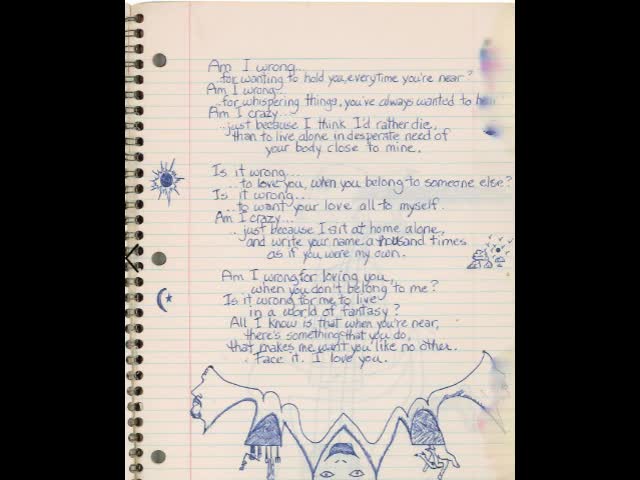Doodling as a thinking tool
This year I returned to teaching after 12 years of doing something else (and I’m so glad I did, I love it!) My first lesson foray was ‘doodling as a thinking tool’ and that’s what this post is about. I’m going to share what I did, why I did it, and how it turned out (awesome).
Why doodling?
There are a few different definitions for doodling. Some concentrate on the kinds of marks made, i.e. random scribbles, and some say doodles are to simply stave off boredom. These things are valid, but for me they’re not the real gist. The definition I like states that doodles are drawings made when attention is otherwise occupied.
It's a very interesting phenomenon and a very interesting thing with which to start the school year. Here's why:
- Doodling - as defined above - is a genuine, evidence-based thinking and calming strategy (more about this later). It’s a useful and powerful tool in the classroom and just generally in life.
- It’s inclusive and equitable. To doodle, students don’t need to be able to read or write or speak English or own a device or be neurotypical (doodling can be particularly helpful for children who have ADHD). Schools haven't always been great at meeting the needs of diverse learners. Doodling does.
- It is a personal love of mine (tbh it’s probably of disproportionate influence in my life) and a way to share something of myself with the students. This helps establish our relationship (I am convinced relationship-building is the most crucial thing in teaching and learning) and sets me up as a bit eccentric (important role-modelling. I want the kids to know it’s OK to be whoever they are).
- It’s low-stress, compelling, and joyful. All good things with which to start the school year.
- Doodling can be put on the walls (which on day one are very blank) helping make the classroom beautiful and interesting, and establishing it as a working environment ‘owned’ by the students.
- And finally, doodling is a legit learning context that does reflect the NZ Curriculum. It covers Key competencies - Using language, symbols and text, Thinking and Managing self; Health and PE, ‘students develop the knowledge, understandings, skills, and attitudes that they need in order to maintain and enhance their personal well-being and physical development’; and English, ‘making meaning of ideas or information they (students) receive through listening, reading, and viewing’1
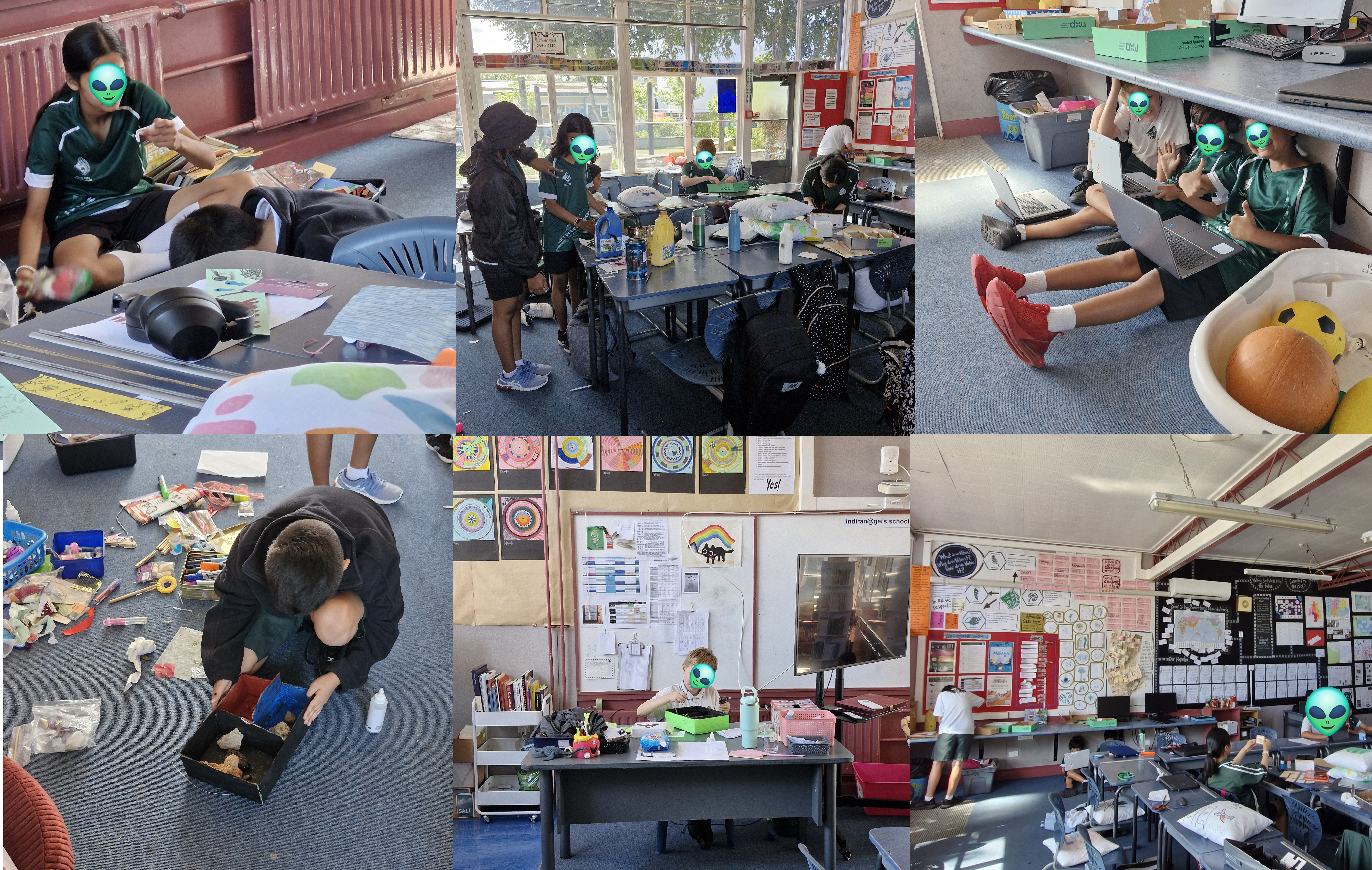
What I mean by a 'working environment'
Doodling is about thinking not drawing
You will notice that the above list makes no reference to the subject of visual art. That’s because doodling is not about this. Composition, colour, mark-making, and all the various other art accoutrements are irrelevant. Gorgeous drawings are a byproduct of doodling, not its purpose.
Doodling is about thinking and one hundred percent needs to be framed as such in the classroom. This is important because it preempts any ideas or feelings children may have about ‘not being able to draw’; and preempts any need for perfection or pressure on those children who ‘can draw’.2 Plus it’s just true.
How doodling and thinking fit together
First up, please note my explanation regarding the neurological process of doodling is basic, clumsy and not-quite-right. In the classroom however, I don’t think it matters. All I need to get across to learners is that doodling physically and positively influences the way their brains work. Here’s a correct, detailed and respectable Harvard Medical School explanation of how it all works.
But my classroom wall gumby explanation is thus:
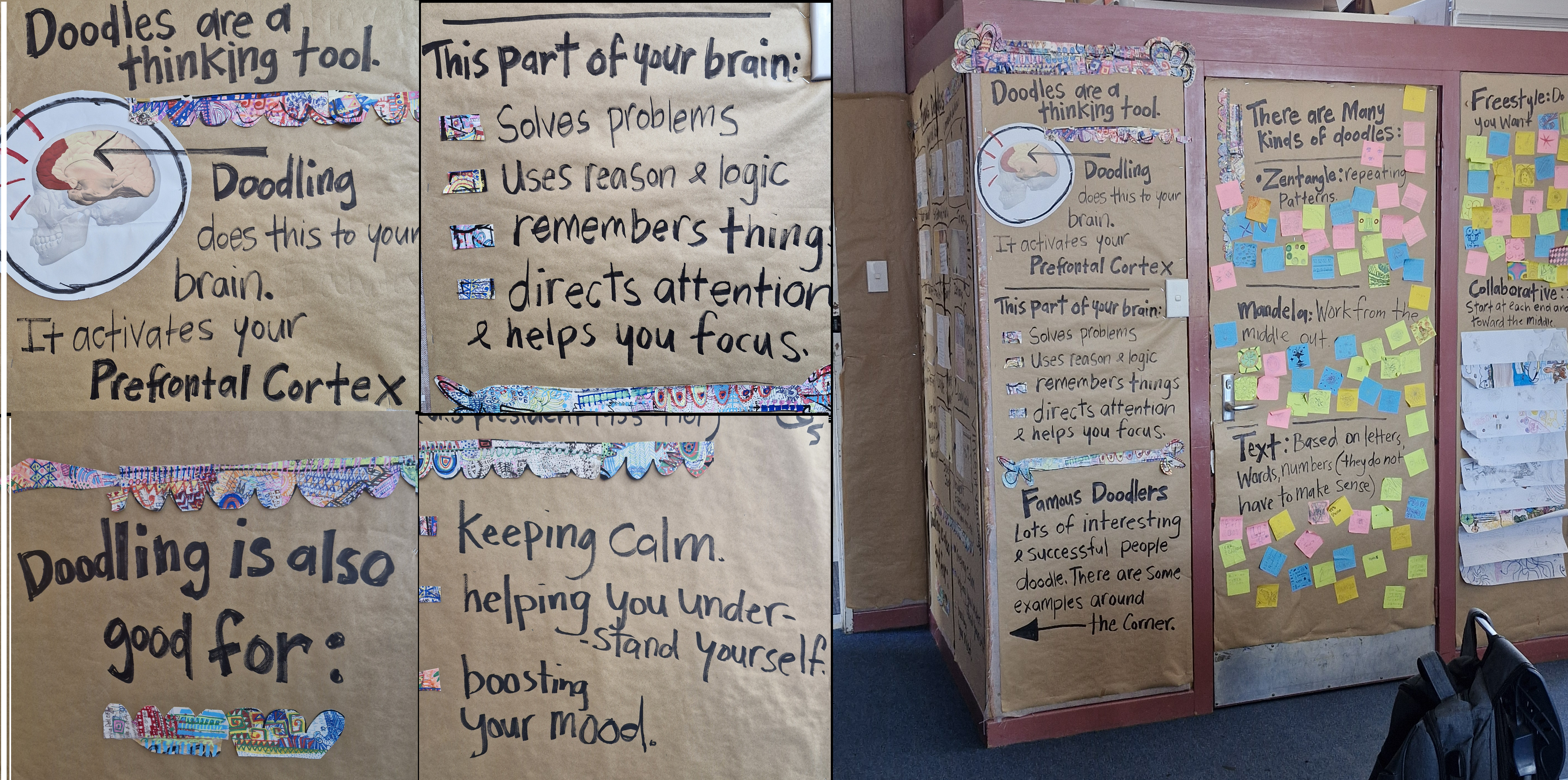
As you can see I use the word 'thinking' in quite a broad way, with reference to emotion as well as cognition
Anyway, here are the things I did (with appropriate teacher technique and hype):
- Shared my own doodles:
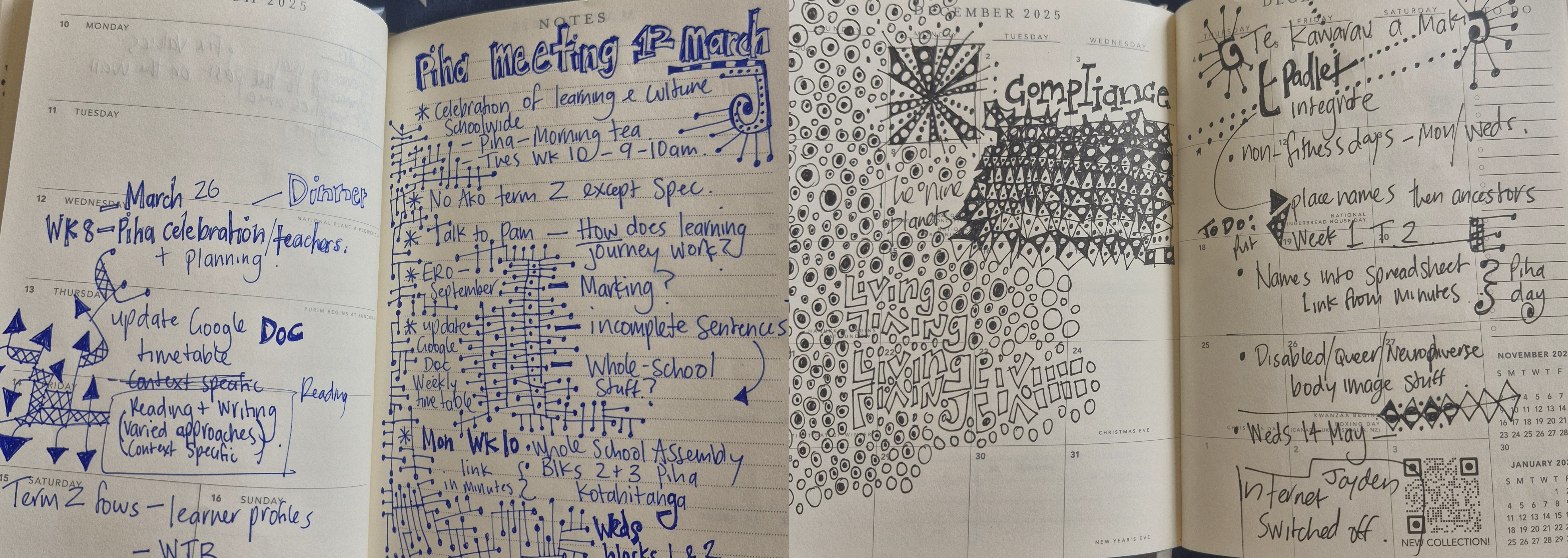
I've been to some very productive meetings
- Showed this magical video of the brain working
- Talked about famous, interesting people who doodle/d:
I put the famous doodling information and images on the wall, and made this clumsy video just for you
- Segued into cave paintings and marginalia for a bit
- Looked at and tried some different kinds of doodles - zentangle (repeating patterns); mandela (working from the middle out); text (using letters, words, numbers); collaborative (two people start at either end of a piece of paper and meet in the middle); and freestyle (do whatever you want). These explorations were spread out and done quite quickly, each one twentyish minutes.
- Gave everyone a doodling notebook and nice pen, for use when they wanted/needed it (as with everything some kids really took to it, others do it now and again, and others are indifferent. All responses are legitimate).

Types of doodles
How it turned out
Doodling has become a lovely, powerful part of our classroom. And I'll end on a cute story to illustrate how; I was reading ‘George’s Marvelous Medicine’, an excellent first read-aloud for a new class. It’s short, hilarious, light and most importantly has potential for heaps of funny voices, something I use to full advantage. Anyway, as I read, the children doodled, heads down, silent, looking like their concentration was elsewhere. But then I made a mistake! I used the horrible granny’s voice when I should have used George’s. Thirty children’s heads lifted from their doodling pages and thirty children’s voices indignantly pointed it out. It was the best.
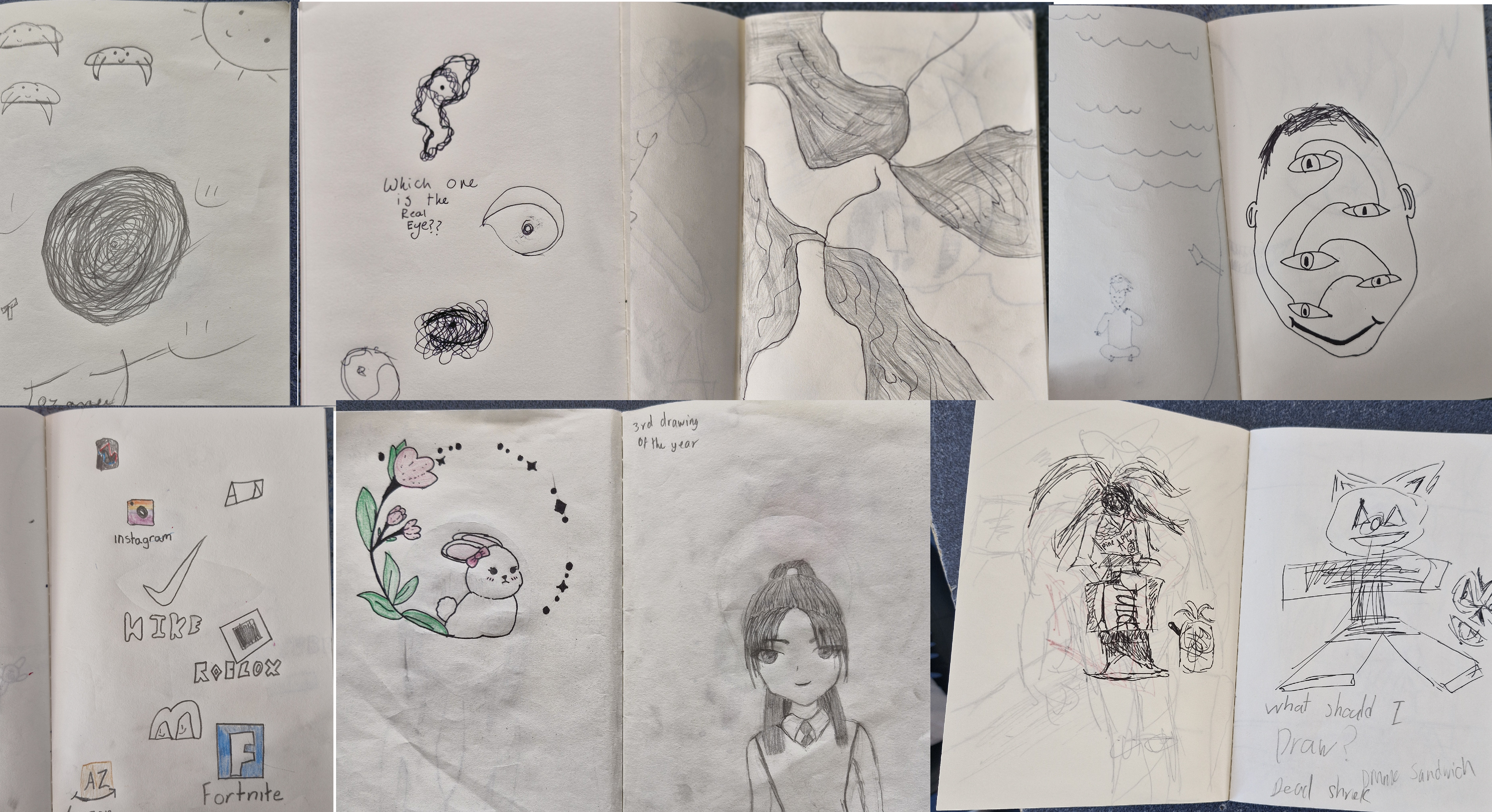
Notebook doodles
1. Although the English curriculum is in the process of being changed. I believe in the new one there’s going to be a lot about tidy handwriting.
2. This can/can’t draw nonsense is something my hero, cartoonist and teacher Lynda Barry, talks about a lot - https://www.youtube.com/watch?v=Xbpb2cxKhaE She’s written a bunch of books about the creative process. These are essential professional reading for any teacher - https://drawnandquarterly.com/author/lynda-barry/
3. There are also these videos which I didn’t end up using - a child-friendly explanation of the prefrontal cortex explanation for kids: https://youtu.be/QlPwl8iixa4?si=iqXRTWJ9xvQvIKwI  and this really weird rap https://youtu.be/DCbBux-KyIE?si=PKpv6999oosCkl5q 
